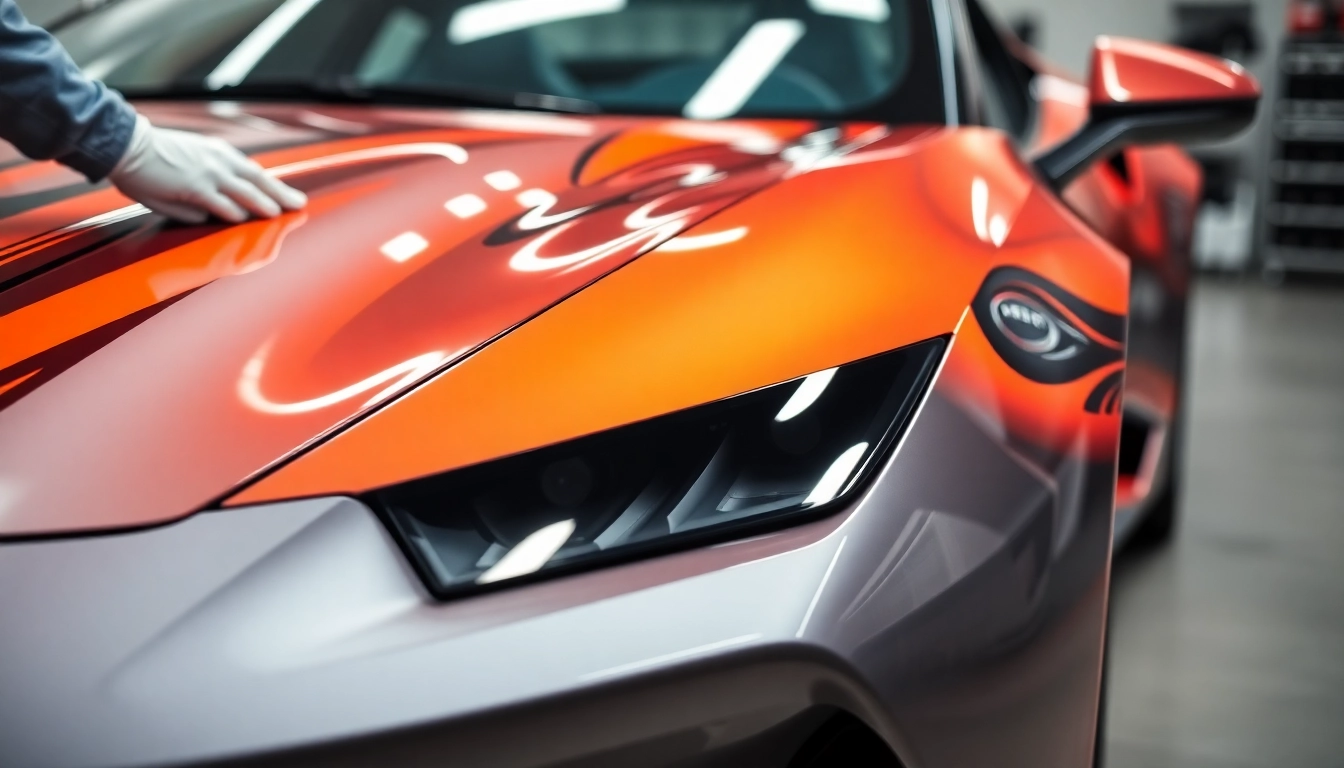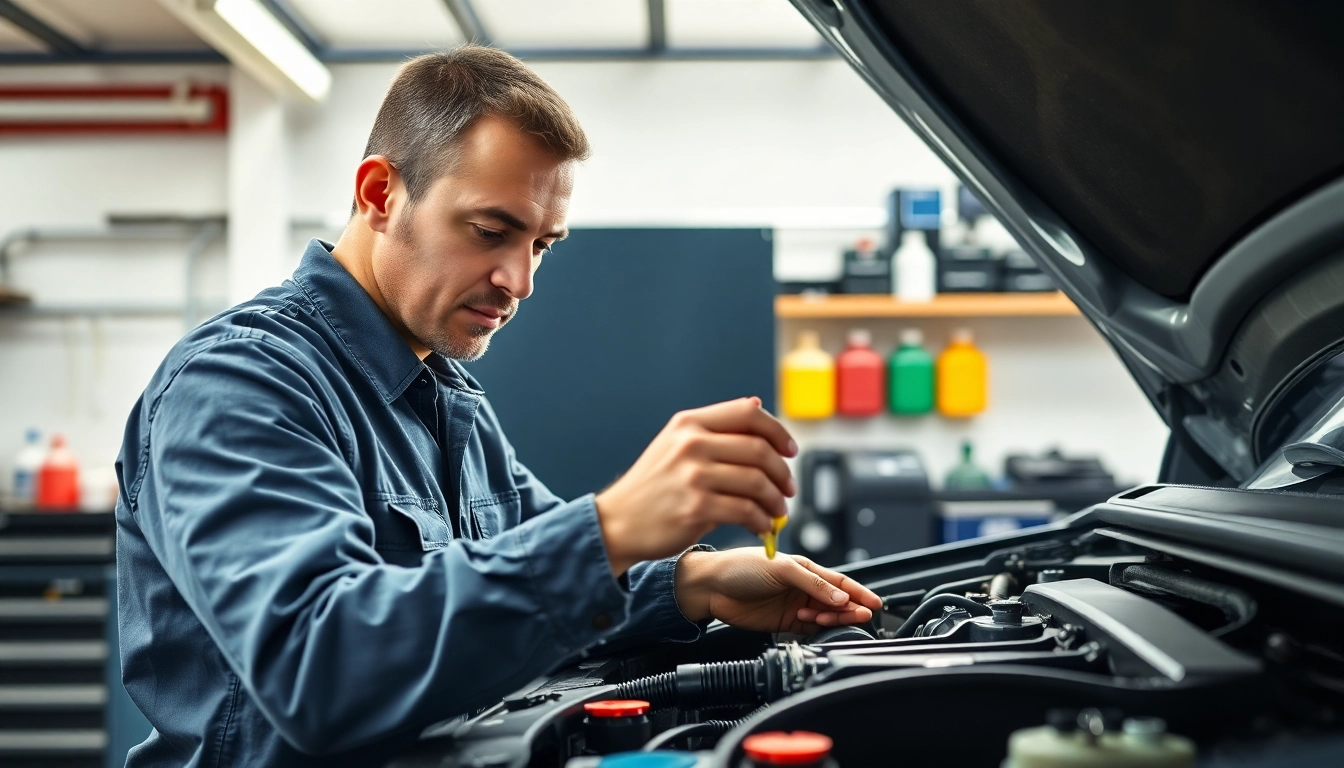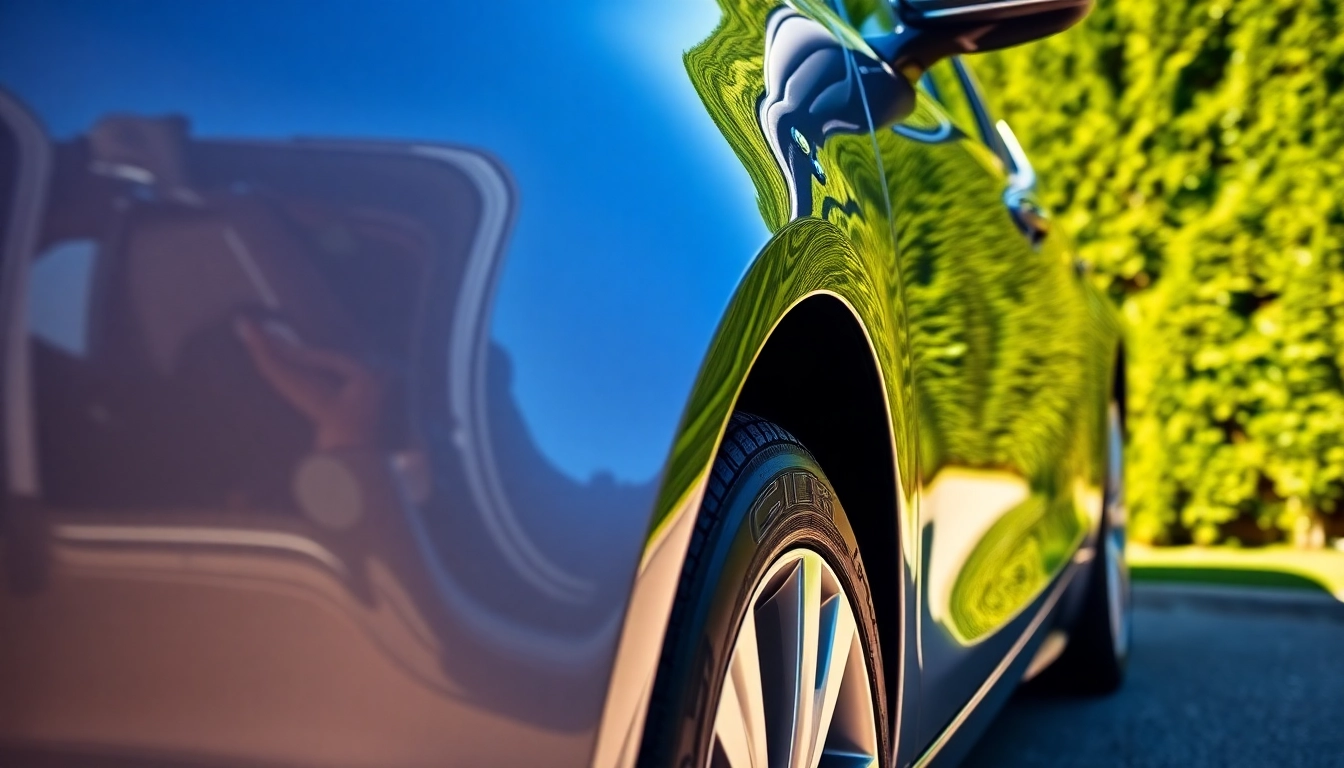Comprehensive Guide to Full Wrap Services: Transform Your Vehicle’s Look
Understanding Full Wrap Services
What Are Full Wrap Services?
Full wrap services are a specialized method of transforming the exterior of a vehicle by covering it entirely with custom vinyl graphics. Unlike partial wraps, which may only cover certain portions of a vehicle, full wraps provide complete coverage, allowing for a seamless and cohesive look that can include all sides, the roof, bumpers, and even windows. This service is often utilized for branding purposes, advertising, or simply personalizing a vehicle to reflect the owner’s style.
A full wrap can serve various purposes, from creating an eye-catching mobile advertisement to changing the color of the vehicle without the need for a traditional paint job. The vinyl material used in these wraps is durable and may come in various finishes, including matte, gloss, or satin, and can be printed with custom designs or graphics. For more information about these transformative Full Wrap Services, it’s essential to understand their features and benefits.
Benefits of Full Wraps for Your Vehicle
Opting for a full wrap comes with a multitude of advantages:
- Cost-Effective Customization: Full wraps can deliver a fresh look without the hefty price tag associated with a complete paint job. They can be removed or replaced without damaging the original paint underneath.
- Versatile Design Options: With endless design possibilities, full wraps allow for complete creativity. Businesses can showcase logos, images, and other branding elements prominently, while individuals can express personal style.
- Protection for the Original Finish: Vinyl wraps provide a protective layer over a vehicle’s paint, safeguarding it from scratches, UV rays, and other environmental factors, which helps maintain resale value.
- Easy Maintenance: Full wraps are relatively easy to clean. Regular washing will keep them looking fresh and vibrant without requiring special treatments.
- Brand Visibility: For businesses, a full wrap serves as a powerful advertising tool. As vehicles travel around town, they become moving billboards, enhancing brand exposure.
Choosing the Right Vinyl For Your Full Wrap
The type of vinyl chosen for a full wrap can significantly impact its appearance, durability, and overall performance. It’s important to consider:
- Type of Vinyl: There are different categories of vinyl, including calendared and cast. Calendared vinyl is thicker and less expensive, making it suitable for short-term applications. Cast vinyl, on the other hand, is thinner, more conformable, and lasts longer, making it ideal for full wraps.
- Finish: Vinyl wraps come in multiple finishes—gloss, matte, satin, and even textured. Each finish provides a different aesthetic and can affect how colors appear in various lighting conditions.
- Durability: Consider the intended use and lifespan of the wrap. Some vinyls are designed for durability against environmental challenges, while others may be better suited for temporary display.
- Color and Design: Ensure that the selected vinyl aligns with the vehicle’s intended purpose—whether to attract attention or maintain a subdued elegance. It’s crucial to visualize how the chosen color and design will look on the vehicle.
Getting Started with Full Wraps
Consultation Process for Full Wrap Services
The initial phase of obtaining a full wrap involves a detailed consultation. This step is crucial for evaluating the client’s needs and preferences. Representatives from the wrap services will typically meet with the client to discuss:
- Objectives: Understanding what the client aims to achieve—branding, personal expression, or aesthetic enhancement.
- Design Preferences: Gathering information about desired colors, themes, and styles to create a customized design that resonates with the client.
- Budget Considerations: Discussing financial constraints and presenting various options within the selected budget to ensure transparency and satisfaction.
Initial Vehicle Preparation Before Wrapping
Before applying a vinyl wrap, thorough preparation of the vehicle is essential to ensure a flawless installation. This process includes:
- Cleaning: The vehicle must be thoroughly washed to remove any dirt, grease, or wax, as these materials can hinder adhesion.
- Inspections: Checking for any existing damage, rust, or imperfections. Repairs should be conducted as needed to provide a smooth surface for the wrap.
- Drying: Ensuring that the vehicle is completely dry to prevent moisture from getting trapped under the vinyl during application.
Design Considerations for Effective Vehicle Wraps
Design plays a pivotal role in the effectiveness of a vehicle wrap. Key considerations include:
- Brand Identity: The design should seamlessly reflect the brand’s identity, including logo placement and color schemes.
- Visibility and Readability: Text and graphics should be easily readable from a distance. Utilizing contrasting colors can enhance visibility.
- Placement: Strategic placement of design elements is critical. Important information should be easily accessible without obstructing critical vehicle components.
Installation Process Explained
Step-by-Step Guide to Applying Full Wraps
The installation of a full wrap is an intricate process that requires precision and skill. Here’s a detailed overview of the typical steps involved:
- Preparation: As highlighted, thorough washing and inspection of the vehicle’s surface, followed by drying.
- Measurement: Accurate measurements are taken to ensure that the vinyl will fit perfectly over the vehicle’s contours.
- Printing and Cutting: The design is printed on high-quality vinyl, which is then cut to the precise dimensions needed for the vehicle.
- Heat Application: Professionals use heat to make the vinyl more pliable. This step is essential for applying the vinyl to complex shapes.
- Adhesion: The vinyl is carefully applied, smoothing out any air bubbles to ensure a flawless finish.
- Trimming and Finishing Touches: After application, excess vinyl is trimmed, and edges are sealed to prevent lifting.
Importance of Professional Installation
While attempting a DIY wrap may seem tempting, professional installation is crucial for several reasons:
- Experience: Professionals possess the expertise to navigate the complexities of vehicle wrapping, ensuring optimal results.
- Quality Tools: Professional installers use specialized tools and techniques that result in a better finish compared to standard household items.
- Warranties and Guarantees: Many professional services offer warranties on both materials and workmanship, providing peace of mind for the client.
Post-Installation Care for Longevity
After the wrap is installed, proper maintenance is essential to maximize its lifespan. Key tips include:
- Washing: Regular cleaning with mild soap and water will keep the wrap looking fresh. It’s best to avoid high-pressure washing.
- Avoiding Chemicals: Harsh chemicals or waxes can damage the vinyl, so it’s best to use products specifically designed for vinyl wraps.
- Parking Indoors: Whenever possible, parking under cover or indoors can minimize UV exposure and environmental wear and tear.
Cost and Value of Full Wrap Services
Average Costs Associated with Full Wraps
The expected cost for a full wrap can vary widely, typically falling between $2,000 and $5,000, depending on several factors. These include:
- Size of the Vehicle: Larger vehicles, such as vans or trucks, generally cost more than smaller cars.
- Complexity of Design: Custom or intricate designs that require more labor and materials will increase costs.
- Quality of Materials: Higher-grade vinyl may come at a premium price but offers enhanced durability and consistency.
Factors Influencing Full Wrap Pricing
Several elements play into the final price of full wrap services:
- Material Costs: The choice of vinyl significantly affects pricing. Calendered vinyl is cheaper but less durable than cast vinyl.
- Labor Costs: The experience and skill level of the installers, along with the time taken for proper application, can impact overall costs.
- Location: Prices may vary based on geographical location, with some areas having higher labor rates due to demand.
Cost vs. Value: Is a Full Wrap Worth It?
When weighing the cost of a full wrap against its value, several critical aspects should be considered:
- Marketing Potential: For businesses, the advertising reach gained from a full wrap can translate into new client engagements, thereby recouping investment costs.
- Vehicle Resale: A full wrap can help maintain the resale value of the vehicle by protecting the original paintwork underneath.
- Longevity and Durability: With proper care, a high-quality wrap can last several years, making it a practical and economical choice over time.
Maintaining Your Vehicle’s Full Wrap
Best Practices for Care and Maintenance
To keep a full wrap looking its best, consider these best practices:
- Regular Cleaning: Use gentle cleaning solutions and soft microfiber cloths when washing your wrapped vehicle to prevent scratches.
- Avoid Direct Sunlight: Prolonged exposure to the sun can fade colors. Consider using a car cover when parking outside for long periods.
- Monitor for Damage: Regularly inspect the wrap for any signs of peeling or wear, and address issues promptly to avoid further damage.
Signs That Your Wrap Needs Replacement
Awareness of when a wrap may need to be replaced is crucial for maintaining vehicle aesthetics. Indicators include:
- Fading: If the colors appear dull and washed out, it may be time to consider a replacement.
- Cracking or Peeling: Visible cracks or sections of the wrap that are beginning to lift are clear signs that the wrap has reached the end of its life.
- Damaged Graphics: Any significant damage to graphics can detract from the overall look and may warrant a full replacement.
Maximizing the Lifespan of Your Full Wrap
To extend the lifespan of your full wrap, incorporate the following strategies:
- Follow Maintenance Guidelines: Adhering to cleaning and care routines is essential for longevity.
- Avoid Automatic Car Washes: The brushes used in these washes can damage the vinyl. Hand washing is preferable.
- Seek Professional Help: If damages occur, consulting with a professional for repairs and maintenance can prevent further issues.










Post Comment